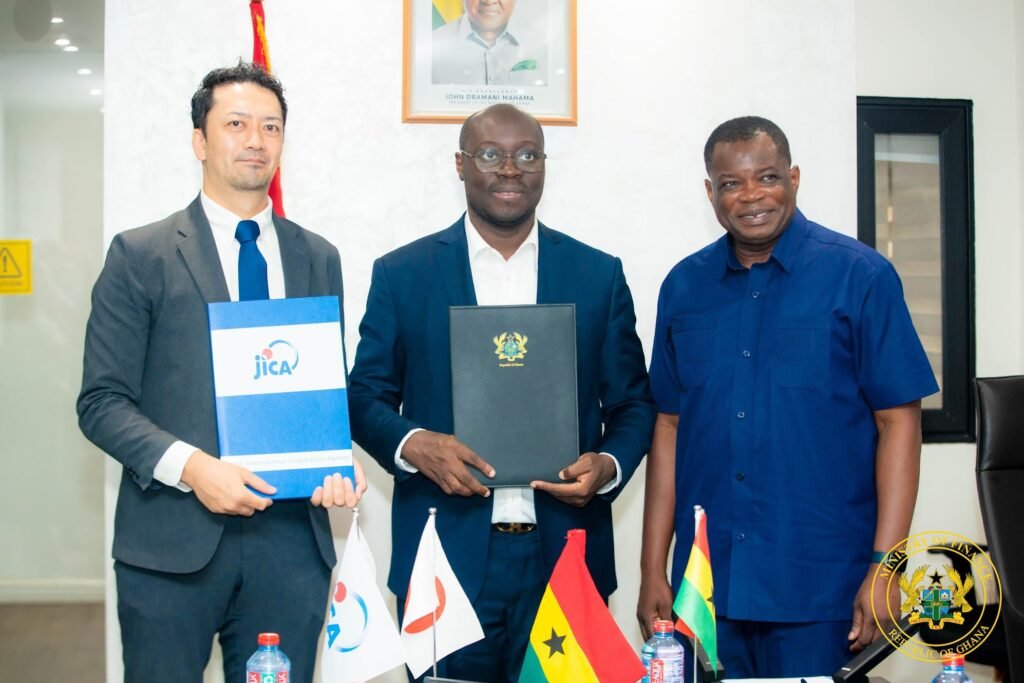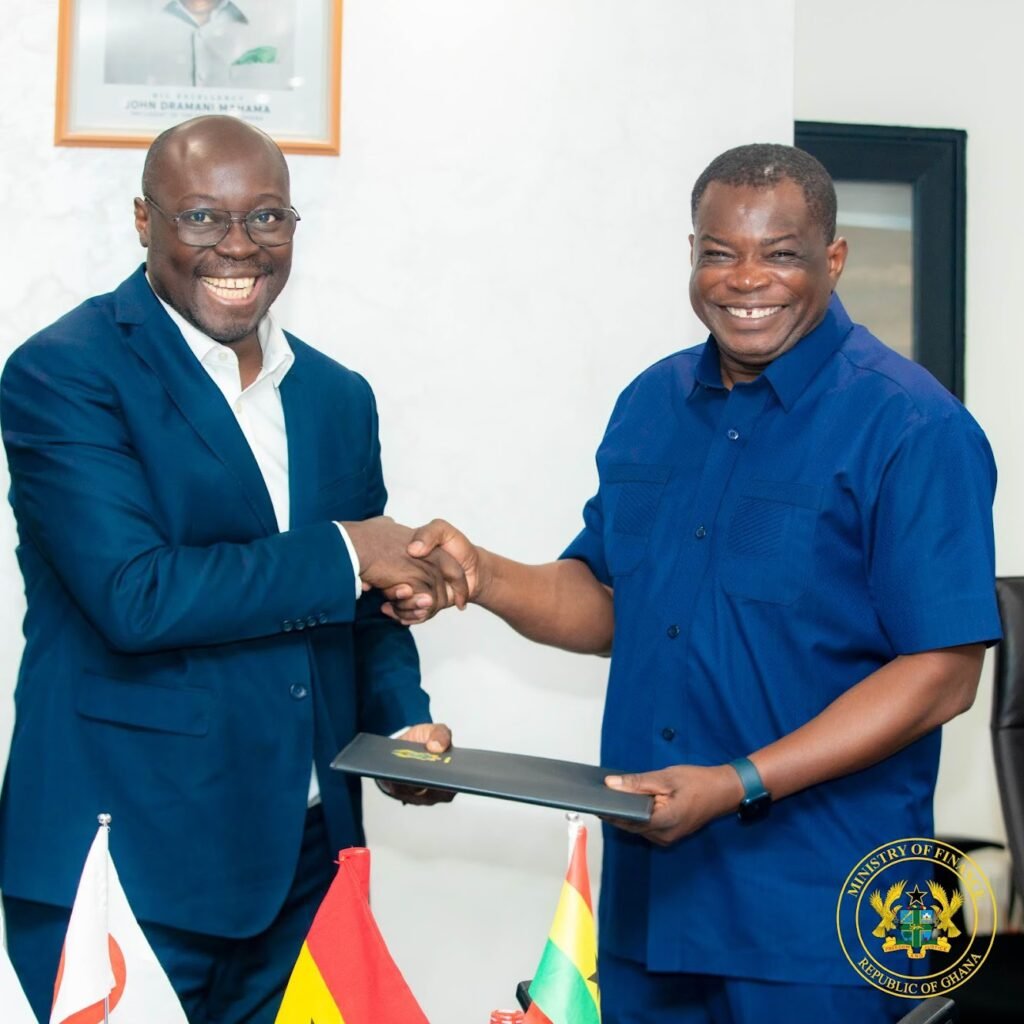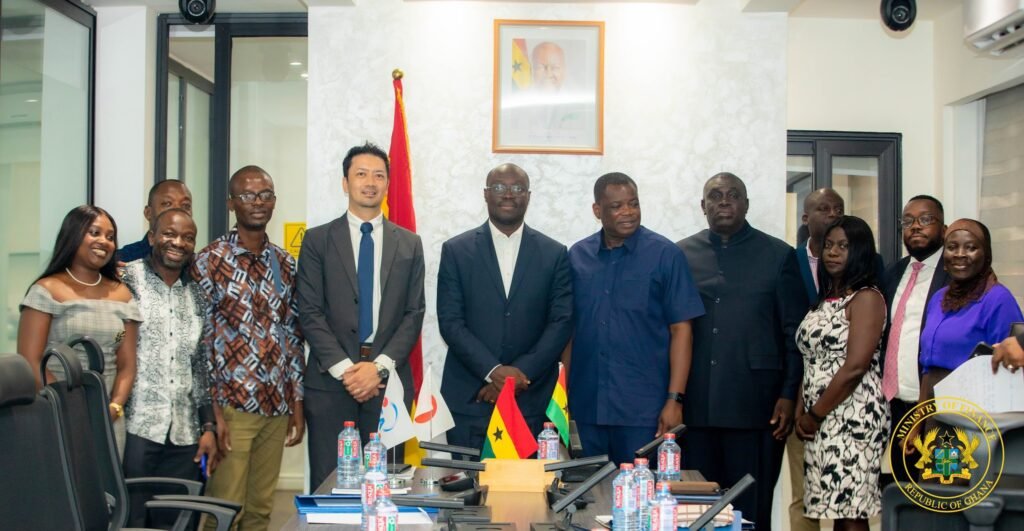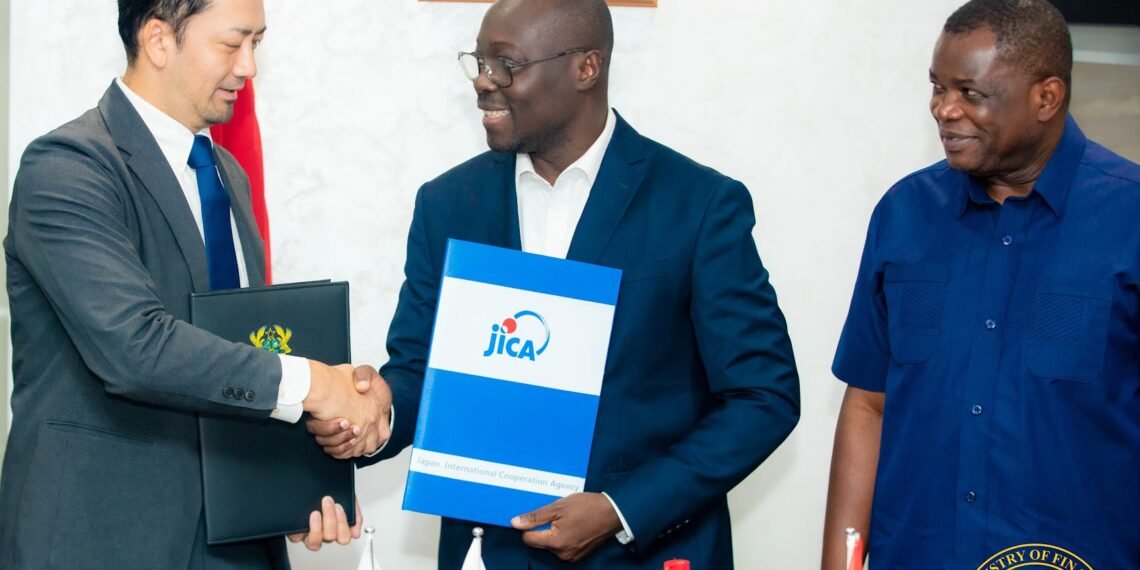The government of Ghana has secured a ¥3 billion (Japanese Yen) grant from the Japan International Cooperation Agency (JICA) to finance the long-awaited improvement of Kumasi’s Inner Ring Road, a critical transport artery in the Ashanti regional capital.
The announcement, made by the Minister for Finance, Dr. Cassiel Ato Forson, marks what he described as a major boost for infrastructure development in Kumasi, popularly known as Oseikrom.
Dr. Forson, who signed the grant agreement on behalf of Ghana, explained that the Inner Ring Road plays a central role in both local and international connectivity. It links the N6 and N8 highways within Kumasi and forms part of the larger Takoradi/Tema Ports–Ouagadougou Corridor, which is vital for regional trade.
“Unfortunately, rapid growth in traffic has turned sections of this road into bottlenecks, with congestion, delays, and safety risks for road users. This project directly tackles those challenges”.
Minister for Finance, Dr. Cassiel Ato Forson,
The project will involve the widening of a 3.2-kilometre stretch of road between the Santasi and Ahodwo Roundabouts, the upgrading of key intersections with modern traffic signals, the construction of improved pedestrian facilities, and the installation of upgraded drainage systems to reduce flooding risks.
It will also strengthen the link between the Santasi Roundabout and the N8, creating smoother traffic flow across the metropolitan city of Kumasi, the Ashanti Regional capital.

According to the Finance Minister, the project’s expected impact will be transformative. Travel speeds on the Inner Ring Road are projected to more than triple, while journey times will be drastically reduced, improving both passenger travel and the movement of freight through Kumasi.
Enhancing Commercial Activity
Beyond easing traffic, the Minister emphasized that the improved road will enhance commercial activity and boost Kumasi’s role as a strategic hub in the national economy. The city, often regarded as the commercial heartbeat of Ghana, serves as a major link between the southern ports and northern Ghana, as well as the landlocked Sahelian countries.
Dr. Forson expressed gratitude to JICA for its “generous support and continued partnership with Ghana,” noting that Japanese assistance has historically played a critical role in strengthening Ghana’s transport and infrastructure networks. He stressed that the grant was not an isolated initiative but part of a broader government agenda to modernize roads in Kumasi and the wider Ashanti Region.
Among the ongoing and upcoming projects, he cited the Suame Interchange and its adjoining local roads, the continuation of works on the Sunyani Road (Phase 2), the Konongo Bypass, and the much-anticipated 45-kilometre Kumasi Outer Ring Road.
Collectively, these projects, according to him, will not only improve urban mobility but also reshape the physical and economic landscape of the region

Mahama’s Infrastructure Drive
The Finance Minister framed these investments as part of President John Dramani Mahama’s broader vision for infrastructure-led growth, designed to stimulate trade, reduce travel-related inefficiencies, and improve quality of life for citizens.
By addressing traffic congestion and poor road conditions, government aims to tackle one of the most visible challenges facing Ghanaians in their daily lives while simultaneously boosting economic competitiveness.
Like the capital Accra, Kumasi, as Ghana’s second-largest city, has long struggled with traffic congestion and limited road infrastructure despite being a major driver of national commerce.
The Inner Ring Road project is, therefore a welcome news as seen as a long-overdue intervention that could ease the frustrations of commuters, traders, and businesses that depend on efficient transport.
For JICA, the grant aligns with its broader development cooperation strategy in Ghana, which has prioritized investments in transport, energy, and human resource development. Analysts say the project reflects Japan’s confidence in Ghana’s infrastructure agenda and its recognition of Kumasi’s role as a gateway for regional trade.

Residents of Kumasi are also expected to benefit from safer pedestrian facilities, reduced road accidents, and enhanced drainage systems that will minimize flooding during heavy rains. These improvements, combined with reduced travel times, are anticipated to make commuting within the city significantly more convenient.
The government’s renewed focus on Ashanti’s road infrastructure is also politically symbolic, as the region has historically been a major driver of Ghana’s economy and a critical center of political engagement.
Delivering transformative infrastructure in Kumasi could therefore resonate beyond transport, reinforcing confidence in the government’s ability to address long-standing developmental bottlenecks.
As the project prepares to move into implementation, Dr. Forson reiterated government’s commitment to transparency and effective execution. He assured Ghanaians that the Kumasi Inner Ring Road upgrade, alongside other ongoing infrastructure projects, would not only meet current demands but also anticipate future growth in the city’s population and traffic volumes.
READ ALSO: GSS Unveils Masterplan to Lock Ghana’s Inflation at Single Digits























